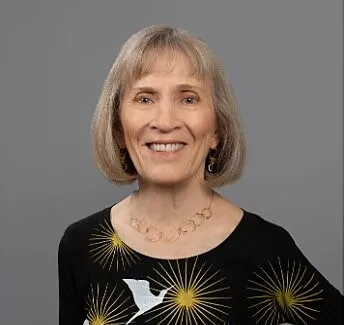Economics For Everyone: 2023 Nobel Prize In Economics - Goldin’s Gender Gap
Claudia Goldin, a Harvard University professor, was awarded the Nobel Prize in economics this year for her pioneering research on women's earnings and labour market participation through the centuries. Her work exposed the causes of deeply rooted wage and labour market inequality between men and women. Goldin's 1990 book "Understanding the Gender Gap: An Economic History of American Women" was a hugely influential examination of the roots of wage inequality over 200 years of history. She has also followed up with studies on the impact of the contraceptive pill on women's career and marriage decisions, women's surnames after marriage as a social indicator, and the reasons why women are now the majority of undergraduates. A member of the Economic Prize committee said Goldin's discoveries "have vast societal implications Goldin's "dedication to improving economic equality is an inspiration to us all," European Central Bank President Christine Lagarde said on social media platform X.

Dr. Goldin, 77, has done seminal work in the field — she was the first woman to be offered tenure in Harvard’s economics department, in 1989. Her wide-ranging work has delved into the causes of the gender wage gap, the evolution of women’s participation in the job market over the past 200 years, and the implications for the future of the labor force.

While it is illegal across much of the world for employers to discriminate based on gender, women still face significant shortfalls in pay compared to men. In the U.S., women last year earned on average 82% of what men earned, according to the Pew Research Center. In Europe, women earned 13% on average less per hour than men in 2021, according to European Commission data.
Goldin’s work on the gender pay gap began decades ago. In her landmark book Understanding the Gender Gap: An Economic History of American Women, Goldin examined men’s and women’s labour market outcomes and argued that the historical persistence of wage and job level disparity could not be attributed solely to sex discrimination or underlying structural factors in the labour market.
Goldin's work revealed that while there has been progress in narrowing the gap over the past decades, there is little evidence of it fully closing any time soon. She has attributed the gap to factors ranging from outright discrimination to phenomena such as "greedy work", a term she coined for jobs that pay disproportionately more per hour when someone works longer or has less control over those hours, effectively penalizing women who need to seek flexible labour. Dr. Goldin has also illustrated how the process of closing the gender wage gap has been uneven throughout history. Recently, progress in closing it has been halting: Today, women in the United States make a little over 80 cents for every dollar a man makes.
Dr. Goldin has described the 1970s in particular as a “revolutionary” period in which women in the United States began to marry later, take strides in higher education, and make major progress in the labor market. Birth control pills became more easily available in those years, taking away what Dr. Goldin has called a “potent” reason for early marriage — and giving women more time to form identities outside of the home.
In the past, gender wage gaps could be explained by education and occupation. But Dr. Goldin has shown that most of the earnings difference is now between men and women in the same jobs, the Nobel committee said. Notably, it kicks in after the birth of a woman’s first child. In a 15-year study of business school students at the University of Chicago, for instance, Goldin and her colleagues found in one paper that the pay gap started to widen a year or two after a woman had her first baby.
In line with this, her later work finds measurable differences in experience and labor market behavior that result in pay gaps between men and women. In Dynamics of the Gender Gap for Young Professionals in the Financial and Corporate Sectors, Goldin and coauthors compare elite masters of business administration graduates and find that male and female MBAs earn almost identical following graduation. However, motherhood precipitates career interruptions, reductions in hours, and increasing preferences for flexibility that help explain the widening gender gap for female MBAs compared to male MBAs. This conclusion in addition to subsequent research work in the later period confirmed that motherhood and its attendant labour market changes are an important explanation for the pay gap more generally.
Goldin summarizes her extensive work on the pay gap and highlights certain noteworthy findings: the gender gap tends to widen as individuals age, it varies considerably by occupation, and non‐linear returns to hours worked in certain professions drive the gap. She suggests that government intervention does not provide an easy answer to the pay gap, but instead that private firms should reduce the cost of flexibility for workers, as firms in sectors like healthcare, banking, and real estate have already done.
In her most recent book, Career and Family: Women’s Century‐Long Journey toward Equity, Goldin describes the trade‐offs men and women make as they confront the reality of non‐linear returns to hours worked. The subsequent decision to specialize in career or family to maximize family income means sacrificing time with family or sacrificing career advancement opportunities at a real cost to both parties. She suggests that the adoption of remote and flexible work policies during the pandemic provides some reason for optimism.
She said at a press conference at Harvard that women had throughout history often been hidden from view and uncompensated for doing the same labour that men were paid for. "They have over time left that arena of home or family farm or family business and moved to the broader arena of market production," she said. "They've become workers, they've begun earning a living for themselves and their families. Their lives have greatly changed, but the labour market and the policies of governments are often slower to respond." Therefore, the pay gap is more complex. In this context, Goldin's insights help bring greater clarity to a salient topic.
More By This Author:
Economics For Everyone- Gearing Up For G20
Economics For Everyone - Gains Of Green Revolution
Economics For Everyone: The Insolvency And Bankruptcy Code In India And The National Company Law Tribunal
Disclosure: None



